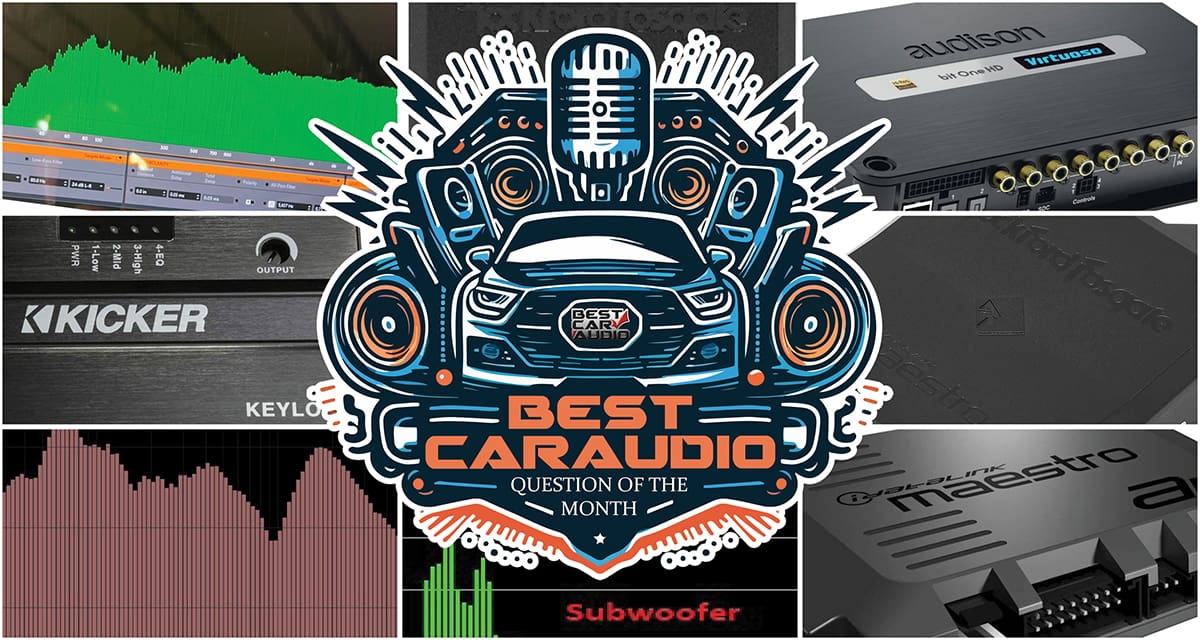Today, we’re discussing a common social media question: Why does the subwoofer I installed in my new car sound bad? Many have described these bass upgrades as inconsistent in volume level or as playing only a narrow range of frequencies. This article will explain the two most common issues that cause this unwanted behavior.
Factory Radio Equalization
Unlike what you would have found 20 years ago, even the most basic factory-installed radios now include equalization for each channel. The intent is to optimize and maximize the performance of the vehicle manufacturers’ inexpensive speakers and deliver an audio system that sounds good to most people. Knowing what the radio is doing before attempting an upgrade is crucial to the functionality of any upgrades you might want to do.
In a typical home audio system, every audio connection is expected to contain the total bandwidth of audio signals. Unless we’re talking about a home theater receiver, we would expect the frequency response to be flat. This means the connection from a media, CD or DVD player, the TV, or a cable receiver are all clean, unprocessed signals.
Car audio systems are no longer like this. Because of the equalization we mentioned, there are usually peaks or valleys in the midrange response. Depending on the size of the speakers, the manufacturer might apply a high-pass filter to limit the amount of bass that goes to the speakers. The result is a signal unsuitable for use with an aftermarket subwoofer.
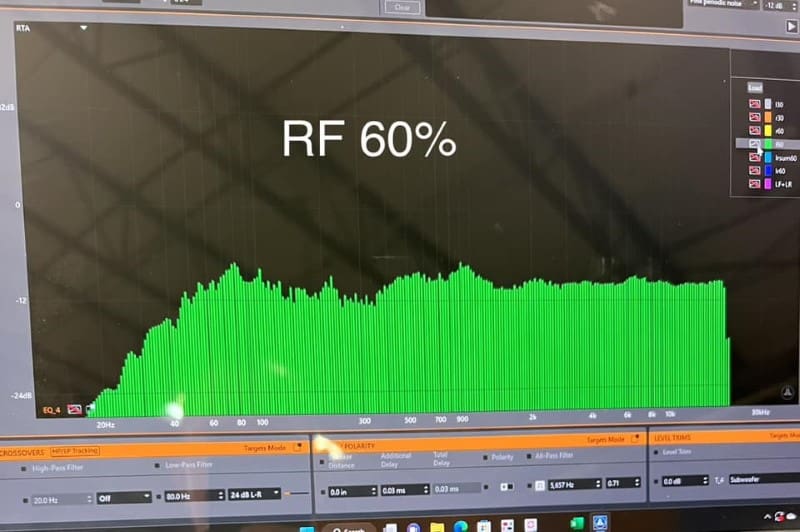
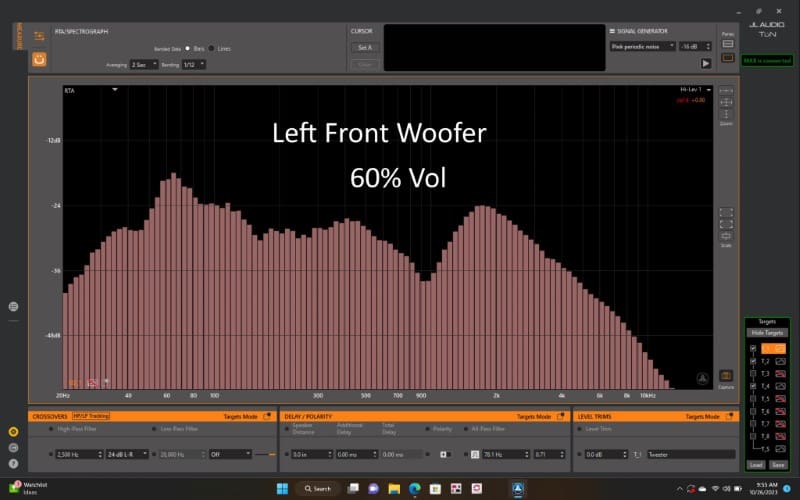
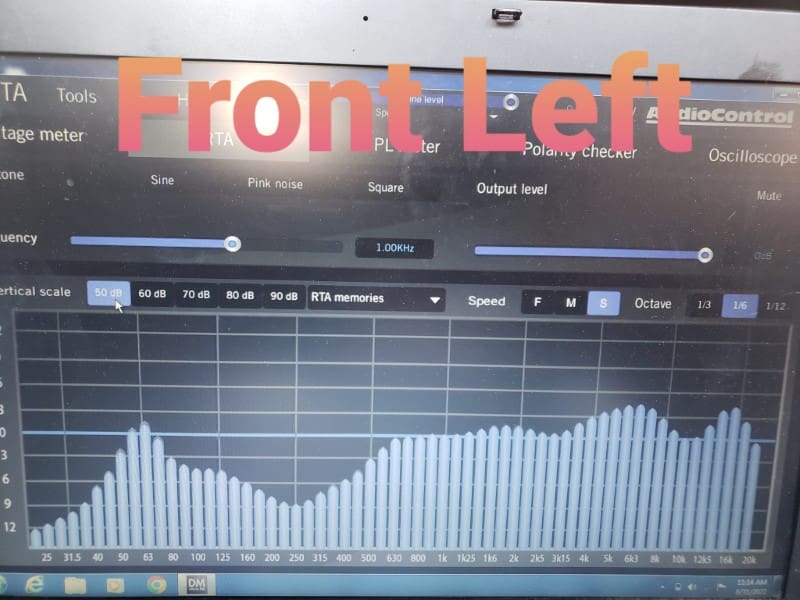
The three measurements shown above demonstrate that there is a large peak in the audio signal going to the door speaker or woofer in many modern car audio systems. The peak frequencies vary from 60 to 80 Hz, depending on the speaker. In these cases, a high-pass filter dramatically reduces bass to improve power handling and clarity while reducing power needs. Hoping to use these signals to feed an add-on subwoofer would result in terrible performance.
Subwoofer Signals
Many modern factory-installed car audio systems include a subwoofer. However, just as with the signal to the door and dash speakers, expecting that the signal going to a subwoofer would be without processing might be a mistake.
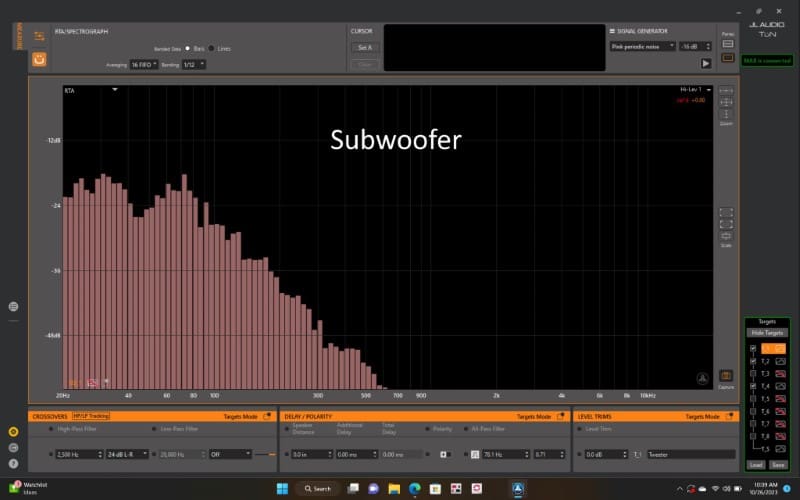
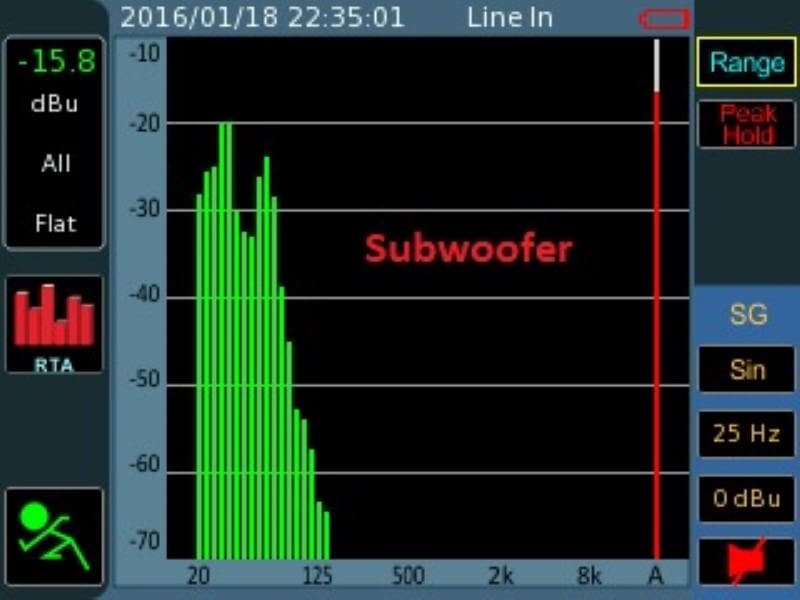
The measurements of the signals shown above clearly show that equalization is applied to the signals going to the factory-installed subwoofers. The Kia signal shows a dip of more than 10 dB around 45 hertz. The Audi signal has more than 12 dB of variance between 40 and 60 hertz. Once again, using these signals for an aftermarket subwoofer will yield unpredictable results.
Resolving Frequency Issues with Factory-Installed Audio Systems
Is there a workaround for all the equalization that’s been applied to these signals? Maybe. Your installer might be able to configure a digital signal processor with enough bands to restore the signal to something that can be used. This process is likely going to take an hour or two. Ultimately, the acoustic output of the new subwoofer should be equalized to a target frequency response curve to yield the best performance.
Another option is using a digital signal processor with automatic integration calibration algorithms. The Audison bit processors and the KICKER KEYLOC are two of the best on the market. Both of these devices can measure frequency response and phase and apply filters to the signal to try to compensate for what the factory system does.
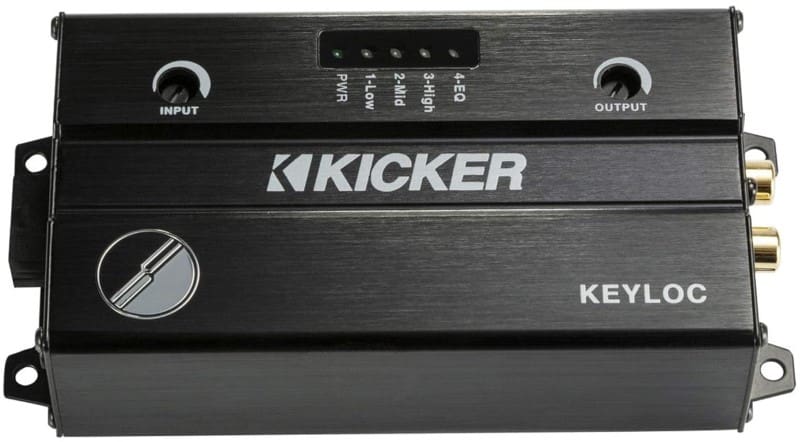
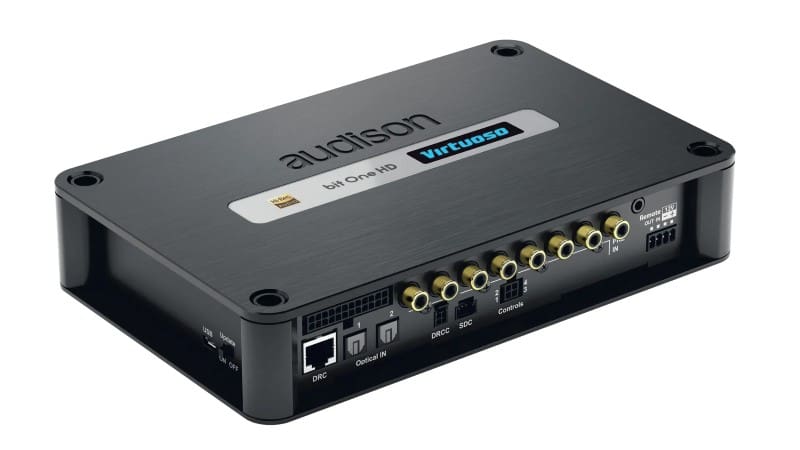
Volume Dependent Equalization
One feature that is nearly impossible to overcome in a factory-installed audio system is volume-dependent frequency response changes. Years ago, car radios started to include a Loudness feature that would boost the treble and bass at low volumes to help improve clarity. Now, many audio systems change equalization as the volume increases. Others implement different filters to help manage woofer excursion and power consumption.
The two graphs below show the signal’s frequency content going to a subwoofer. The first measurement is taken with the radio volume set to 50%. The second measurement shows the signal with the volume set to 75%. If your installer configures an aftermarket subwoofer system to work with one of the two response curves, the system won’t sound good when the opposite is used.
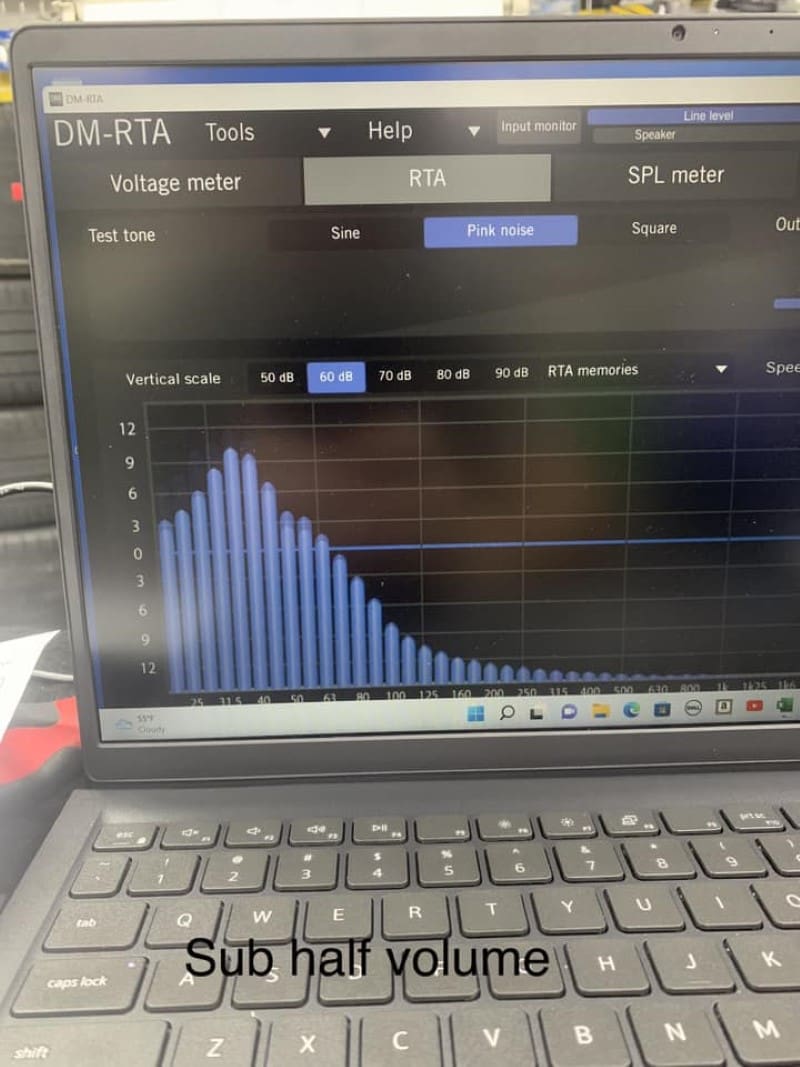
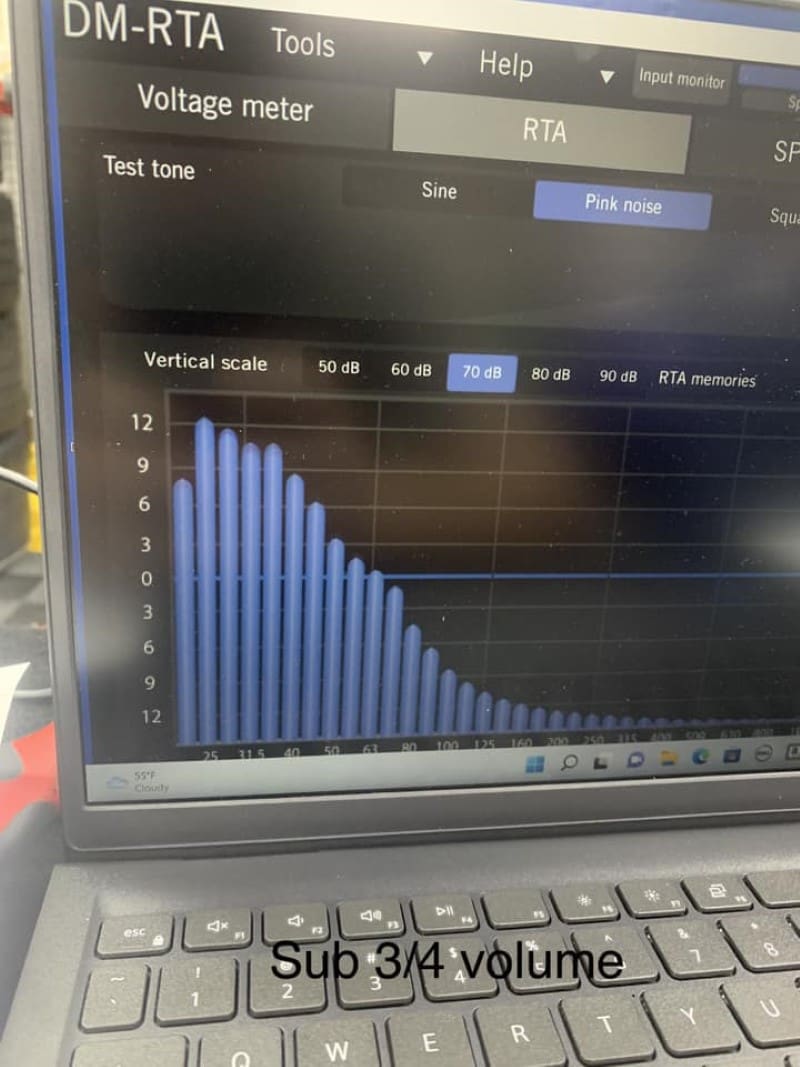
Is there a solution to a system like this? The only option is to find a preamp interface that works with the signal coming from the factory-installed source. This interface will accept the fixed analog, MOST, A2B or AVB signal and output full-bandwidth, equalization-free, linear audio signals that can be fed to a new amplifier. To match the existing system’s performance, you’ll need a competent installer to configure a digital signal processor for the existing speakers or any upgrades you’ve made. Not having proper calibration will make the upgrade worse than the original system.
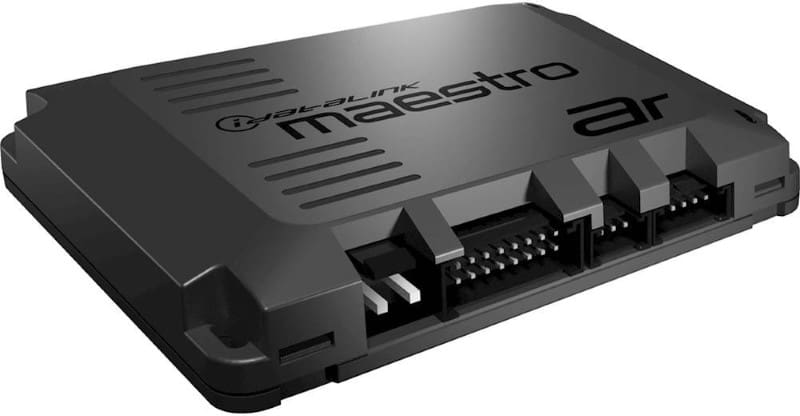
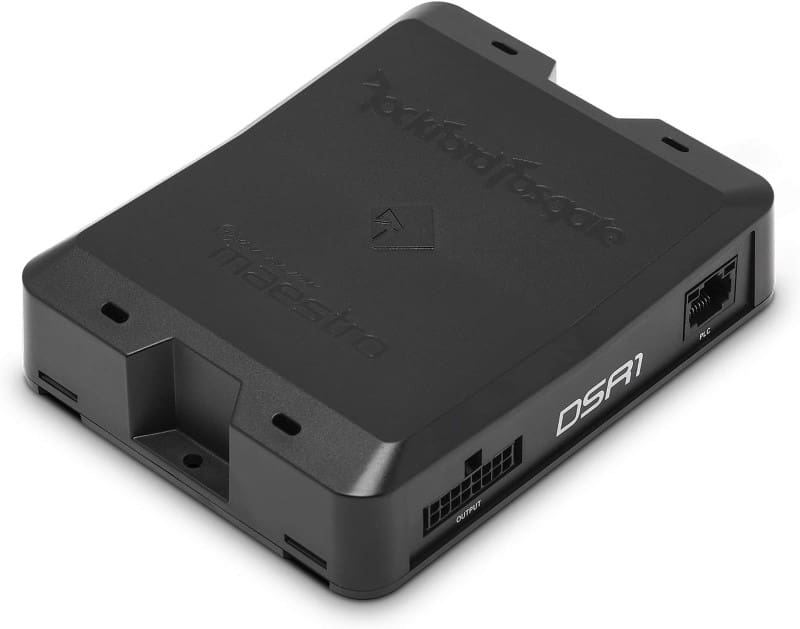
Upgrading Modern Vehicles Can Be Difficult
In this era of unreplaceable car radios, it can be tricky for a reputable mobile enhancement retailer to upgrade the sound system in a new car or truck. For do-it-yourselfers, hoping the signals are flat and operate linearly is extremely unlikely. If you want more bass, more output or improved imaging, drop by a reputable car stereo shop and have them measure the factory-installed audio system for frequency response, crossovers, all-pass filters, delays and volume-dependent equalization. Only once you know what you are working with can you consider upgrade options. Guessing is likely to yield unfavorable results.
